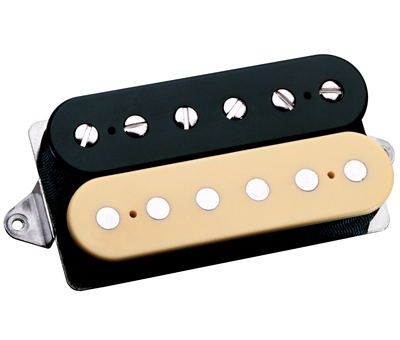 The guitar synthesizer has long been the albatross of the guitar world. Many great designs have been launched over the years all sharing similar problems. Most guitar synthesizer rigs have been confusing and cumbersome. The biggest problem with guitar synthesizers is the interfaces. One of the first guitar synthesizers on the market the Roland GR 300 had a 24-pin controller that connected to nothing but the GR 300 guitar synthesizer.
The guitar synthesizer has long been the albatross of the guitar world. Many great designs have been launched over the years all sharing similar problems. Most guitar synthesizer rigs have been confusing and cumbersome. The biggest problem with guitar synthesizers is the interfaces. One of the first guitar synthesizers on the market the Roland GR 300 had a 24-pin controller that connected to nothing but the GR 300 guitar synthesizer.
Making this even more inconvenient was only one manufacturer made a guitar option 24-pin ready for the unit. Ibanez’s synthesizer controller guitar was as confusing as the synthesizer itself. The guitar was covered with tiny knobs and switches that were impossible to navigate on a dark stage.
The other problem with this unit was the 24 pin connector. These connectors were not carried by most retailers due to their cost and lack of demand for the cables. If you needed a cable the only way to get one was to have your local retailer order one from Roland.
Fast forward decades later and Roland has reworked its synthesizer interface and not only are the cables easier to find but there are a lot more guitar options out there for Roland’s new 13 pin connector. The only issue is Roland is still the only synthesizer option for that connector. The big problem here is the Roland connectors are not midi.
MIDI (Musical Instrument Digital Interface), pronounced /ˈmɪdi/, is an industry-standard protocol that enables electronic musical instruments (synthesizeresizers, drum machines), computers and other electronic equipment (MIDI controllers, sound cards, samplers) to communicate and synchronize with each other. Unlike analog devices, MIDI does not transmit an audio signal — it sends event messages about pitch and intensity, control signals for parameters such as volume, vibrato and panning, cues, and clock signals to set the tempo.
As an electronic protocol, it is notable for its widespread adoption throughout the music industry. MIDI protocol was defined in 1982.
All MIDI-compatible controllers, musical instruments, and MIDI-compatible software follow the same MIDI 1.0 specification, and thus interpret any given MIDI message the same way, and so can communicate with and understand each other.
The one guitar maker to achieve the feat of making a truly midi guitar was the original Parker Guitars over ten years ago. Parker outfitted their NiteFly with a Virtual DSP Corp.’s MidiAxe guitar-to-MIDI converter system. This gave the guitar an  honest to goodness midi connection onboard. The only outboard gear the guitar needs is a small phantom power supply that connects to the end of the midi cable.
honest to goodness midi connection onboard. The only outboard gear the guitar needs is a small phantom power supply that connects to the end of the midi cable.
This beautiful instrument solved so many issues for the guitar synthesizer player. Bulky pitch to midi converters and cumbersome 13 and 24 pin floor units were no longer necessary The Parker Midi Fly now gave the guitarist the ability to interface with any synthesizer on the market.
I own a Roland GR 33 guitar synthesizer, and I love the horn and synthesizer pad patches, but the piano sounds on the Roland GR33 can’t touch my Kurzweil 1000 px. My other synthesizer module the Emu Proteus gives me a pallet of Allan Holdsworth-like patches to play with. The cool thing is you can buy an Emu Proteus module online for under 30 dollars a Kurzweil 1000 px might set you back $100. Synthesizer modules are cheaper than stomp boxes and slide neatly into your equipment rack. They all connect conveniently with a midi cable bought over the counter for 10 dollars at any music store; Best Buy Stores even carries them!
Parker also made the electronics on the original Midi Fly very simple. There is one small knob and two small switches on the lower horn on the guitar. The knob is for volume, and the switches control tracking and octave respectively.
The new Midi Axe (which isn’t Midi – WTF?) returns to a Roland Musical Instrument configuration. It has a 13 pin connector and more knobs on it than a 1960 NASA control panel. You can connect via midi to the for-mentioned devices but only after passing through a bulky floor controller – back to the future.

In my opinion, Parker Guitars who is now owned by Washburn Guitars parent company US Music has just sent guitar technology back 20 years. They have also destroyed the name of a classic axe by naming a nonmidi Roland Synthesizer controller after the famed Midi Fly.
This is a big swing and a miss for Washburn, Parker and US Music. Don’t even get me started on US Music’s redesign of the classic Parker headstock and body style on the new Parker DF models. These are just a bad ideas all around.
From Parker’s Website: Parker is proud to introduce the Fly Mojo MIDI. Featuring a Roland® GK-KIT-GT3 Divided Pickup Kit, this instrument will allow you to simulate all the tones you can ever imagine. Simply plug into a Roland® V-Guitar System, GR-20 Guitar Synthesizer, or any BOS GK Effect Pedal and let your creativity run wild. Along with the MIDI capability, this guitar features Seymour Duncan® Jazz (N) & JB (B) pickups, Sperzel® Trim-Lok™ tuners, and an exclusive Fishman® Piezo electronics system. Explore the unlimited possibilities of the Fly Mojo MIDI, and enter a whole new musical world














